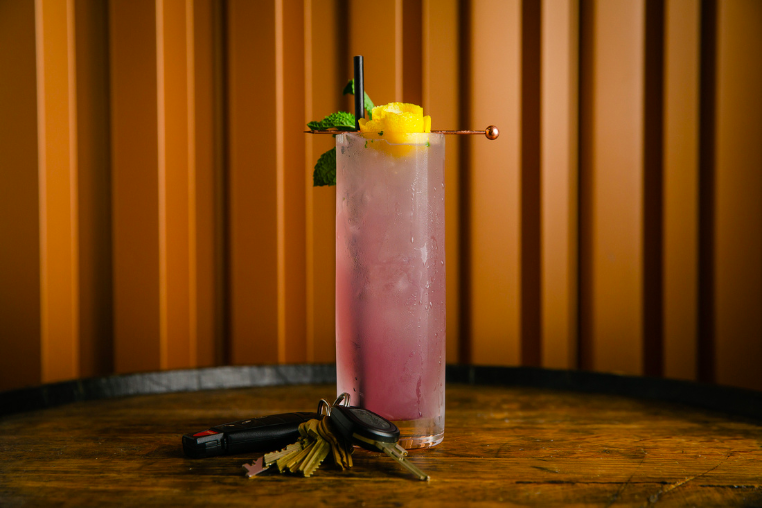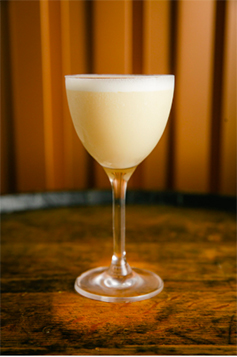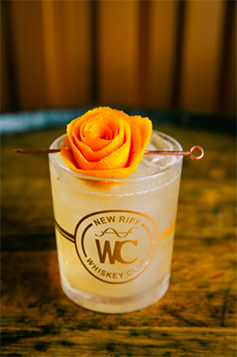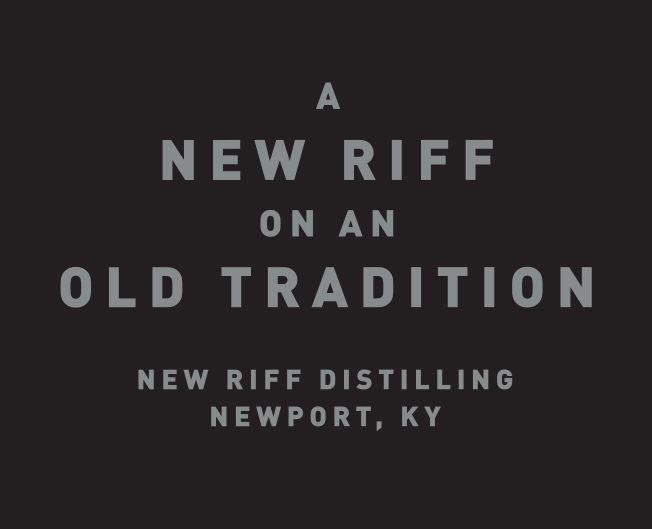Rye is one of the original domesticated Old World grains that was brought to the New World. It takes about two acres planted to rye to make one batch of New Riff rye whiskey.
Distilling an heirloom grain whiskey requires two primary ingredients – a whole lot of seeds and a whole lot of time. Heirloom rye whiskey is truly a patient process. Follow us along the journey of heirloom rye to learn about one of America’s most historic whiskeys.

What You Need to Know About Heirloom Rye
As of the turn of the century, rye whiskey had been in decline for decades. According to the US Department of Agriculture, American rye production peaked in 1919 when farmers harvested over 7 million acres of the seed to be used for many functions, primarily in bread production. Since 2000, the harvest has hovered at only 275,000 acres every year. Roughly 80 percent of winter rye planted every year isn’t even harvested and produced into bread – most winter rye is grown as a cover crop seed to protect soil. The cover crop seed has had a long decline and there isn’t a lot of practical or commercial interest in different varieties of the seed.
A great amount of commercial rye used for bread and other consumer goods is strictly a commodity grain from a mix of different strains. When grain merchants buy grain, they buy from multiple farms. They’ll buy a bin with dozens of other farms within that bin. The farmers know what they’re growing, but merchants have no idea unless they buy directly from the farmer themselves.
Heirloom rye presents a great challenge to those that grow heirloom crops. Winter rye is a promiscuous grain that can easily cross-pollinate. Winter rye seeds must be grown in isolation to accurately produce seed varieties. If they are allowed to cross with other varieties, the identity of the original will be lost. Farmers and distillers that use heirloom rye have to start with seeds from one particularly known provenance.

What does ‘Heirloom’ mean?
Depending on the person, ‘heirloom’ can have many different meetings. Typically, the term refers to older varieties of rye (or other plants, or livestock) that date from the early 20th century or even back into the 1800s. Older varieties are often discarded by farmers due to their lower yield. For distillers, however, a low yield can be beneficial because there are more flavorful grains wherever there are lower yields. This is the same for wine, where lower-yielding vines are highly prized for depth of flavor in their grapes.
Heirloom grains, including rye, have disadvantages that can make them tough to work with. They’re less disease-resistant and more susceptible to insects. The older varieties are more susceptible to disease, and don’t yield as well. For those who produce rye whiskey, like New Riff, the choice to grow single-strain or heirloom rye is impactful. A way to showcase the provenance of rye grains is through the wonderful rye whiskey from New Riff Distilling.
The Heirloom Flavor
It’s easy to discover what other heirloom foods taste like – you can simply eat them and find out. Whiskey takes a lot longer, and its unique challenge of reviving rye means that the grain isn’t as developed as other heirloom varieties like corn and wheat for whiskey and flour. This makes it hard to predict what will affect the flavor of fully matured whiskey. However, the early results are often promising. Depending on the rye, you can find striking and pronounced flavor notes and mouthfeel that can’t be found in other varieties of rye. This makes them all individually unique.
Each rye variety has a particular flavor note. Not only the common spice flavor found in typical rye, but back notes of other flavors like fruit that can be found just underneath other common flavors, making heirloom rye quite delicious.
Whiskey distilleries that use corn and wheat have many more years of experience using heirloom strains, and finding the flavor differences between strains has quickly become more important. Bourbons made with heirloom corn such as Oaxacan Green or Blue Clarage have subtle differences in flavor that will become more pronounced over time. These flavors include caramel and butterscotch found in the blue popcorn.
Rather than distilling heirloom strains completely on their own, some distilleries incorporate a mash bill with higher yields from non-heirloom strains. The variety of heirloom strains add unique flavors even in smaller amounts. Using heirlooms as part of a blend can help increase yield from the fermentation process as well.
However, heirloom rye has not advanced this far along. Few heirloom ryes are produced today, and the day distillers can experiment with many varieties is still far away. However, our history with the development of heirloom corn may suggest that the future of heirloom rye might be fascinating.

The History of Heirloom
Due to prohibition, rye whiskey steadily declined thanks to consumer preferences for beer, wine, and clear spirits. While Bourbon and Tennessee Whiskey still held a small market share, large Bourbon distilleries only produced rye whiskey on a limited basis. It wasn’t until the cocktail revolution began in the early 2000s that quality whiskey for classic cocktail recipes began to take center stage once more.
Today, two primary trends have emerged when it comes to Rye whiskey. The first is a return to the traditional whiskey mash bills style that showcases the unique balance of the rye interacting with the corn, wheat, and barley. Many whiskey enthusiasts love the flavor and history that follow the traditional Rye distilling process. The second trend is variation in the secondary or tertiary ingredients when brewers experiment with malts, oats, and other brewer’s modifiers. These whiskeys allow distilleries and bartenders to push the boundaries on the base spirit and create cocktails that express specific personal creativity.
Interested in learning more about our independent spirits? Follow us to our Balboa Rye Whiskey page to see how we make great whiskey with heirloom rye.
New Riff Distilling 2021. All rights reserved.
